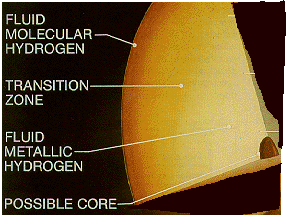This is a schematic of the interior of Saturn.
NASA
The Liquid Hydrogen Layer
The first liquid layer inside Saturn, right under the atmosphere, is a layer of liquid hydrogen!.
The air becomes thicker and thicker, like a dense fog, with more and more liquid drops, until the hydrogen from the air completely changes to a liquid. Once the hydrogen is a liquid, it then acts like the ocean and forms currents which carry heat from the inside to the outside of Saturn.
You might also be interested in:

Motions in the interior of a planet help carry heat from the inside to the outside of the planet. The drawing shows a kind of movement that is usual in the atmosphere as well as the inside of a planet.
...more
Magnetospheres are generated with 1.) magnetic materials and 2.) with motions within the magnetic material. The Earth-like planets generate magnetospheres from iron at the center. But Saturn has almost
...more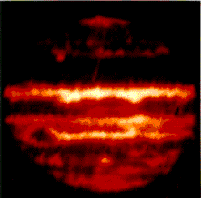
Have you ever thought that a planet could make energy within itself? If you think about it, the ground is not very cold at all (except in the winter). This means that the Earth makes enough energy for
...more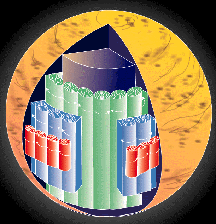
Motions, or currents in the interior of a gas-giant planet such as Saturn may be very different from the motions typical of the earth's interior. A second idea for the motions in the interior of a gas-giant
...more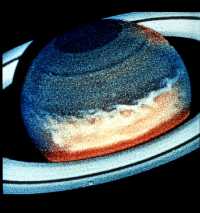
This image of Saturn makes use of false color to show the cloud pattern. The clouds form in bands which move across the disk of Saturn. The banded pattern of clouds, or stripes, is similar to those found
...more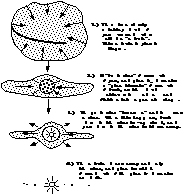
Scientists think that the solar system formed out of a spinning cloud of hydrogen and helium molecules. Because the cloud was spinning, it flattened into a frisbee shape, just like a ball of pizza dough
...more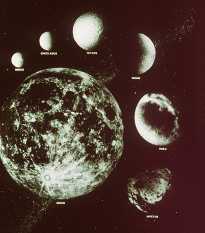
This is an image of the Earth's moon, shown in the lower left, with the icy moons of Saturn. The moons in order, starting from the top left are: Mimas, Enceladus, Tethys, Dione, Rhea, and Iapetus.
...more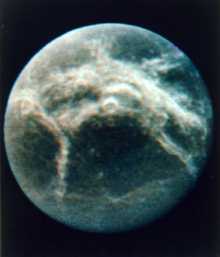
Dione was discovered by G. Cassini in 1684. Dione is the 7th farthest moon from Saturn. It is a small icy moon, lightly cratered, with white streaks across the surface. Dione is about as wide as the Oregon
...more


